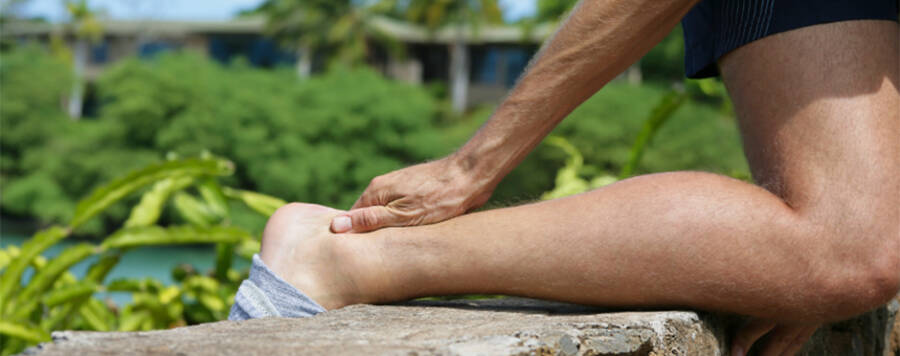What is the Achilles Tendon?
The Achilles tendon is the point of connection for primarily two muscles which make up the bulk of the calf. It is responsible for performing the motion of lifting the heel off the ground. The Achilles tendon is located just above the heel bone where it attaches. Although it can bare high loads, acute and chronic Achilles tendon pathology continues to be involved in 50 percent of all sports related injuries.5 In addition, there continues to be a rise in Achilles tendon ruptures (complete tear), of which 75 percent occur in men between the ages of 30-49 while participating in sports.5
Types of Pain
Achilles tendinitis, is one of the most common diagnoses related to Achilles tendon pain. Achilles tendonitis is an inflammation in the Achilles tendon that is usually caused by a single episode or traumatic event. Pain in this area may also be caused by a repetitive injury or previous traumatic, chemical, or pathogen induced injury6. Ongoing research is finding that due to a failed healing response to an initial injury, individuals may experience on-going mechanical changes to the tendon, resulting in weakness. Chronic symptoms of this nature are typically diagnosed as Achilles tendinosis or tendinopathy. Current research suggests that Achilles tendinopathy occurs in 7-9 percent of top-level runners, but can also develop in individuals who do not participate in sports activities1.
What Leads to Achilles Tendon Pain
Lower limb alignment and biomechanical faults may play a role in the development of Achilles tendon disorders for approximately two-thirds of athletes. Hyper-pronation, or over flattening of the arch of the foot, can also put a person at higher risk. It has also been shown that diabetes and metabolic changes may be risk factors6, in addition to age and gender. NSAID’s and corticosteroid injections can further increase weakness in an already degenerated tendon.6
Individuals may notice their pain at both the beginning and shortly after the end of an exercise session. Typically, a single leg heel raise will cause pain. If it worsens, pain may be experienced throughout the exercise activity or during daily activities. Typically in the initial phase of the injury or failed healing response, the tendon is swollen and tender just above where it inserts in to the heel.1 In chronic or prolonged periods of pain in the Achilles tendon, exercise induced pain is one of the main symptoms that a person will report.
If you’re experiencing pain in your Achilles tendon, please use the button below to schedule a free assessment with an Athletico Physical Therapist near you.
The Athletico blog is an educational resource written by Athletico employees. Athletico bloggers are licensed professionals who abide by the code of ethics outlined by their respective professional associations. The content published in blog posts represents the opinion of the individual author based on their expertise and experience. The content provided in this blog is for informational purposes only, does not constitute medical advice and should not be relied on for making personal health decisions.
References:
Ajis, Adam, et al. Tendinopathy of the main body of the Achilles tendon. The Achilles tendon. London: Springer-Verlag 2007: 59-69.
Alfredson H, Cook J. A treatment algorithm for managing Achilles tendinopathy: new treatment options. Br J Sports med. 2007; 41: 211-216.
Bass, E. Tendinopathy: Why the Difference between Tendinitis and Tendinosis Matters. International Journal of Therapeutic Massage and Bodywork. 2012; 5 (1): 14-17.
Chessin, Meta. Achilles Tendinosis Stopping the Progression to Disability. Journal of Dance & Medicine. 2012; 16(3)
Freedman BR, Gordon JA, Soslowsky LJ. The Achilles tendon: fundamental properties and mechanisms governing healing. Muscles ligaments and Tendons Journal. 2014; 4 (2): 245-255.
Fu S, Rolf C, Cheuk Y, Lui P, Chan K. Deciphering the Pathogensis of tendinopathy: a three-stages process. Sports Medicine, Arthroscopy, Rehabilitation, Therapy & Technology. 2010; 2:30
Reiman M, Burgi C, Strube E, et al. The Utility of clinical measures for the Diagnosis of Achilles Tendon Injuries: A systematic review with meta-analysis. Journal of Athletic Training. 2014; 49 (6): 820-829.

 width="900"
height="356"
>
width="900"
height="356"
>
